
Breathing Mechanics and Physiology: Why Better Breathing Means Better Health
We breathe over 20,000 times a day, yet most of us don’t think twice about it. But if you struggle with chronic pain, fatigue, stress,

That is the question…the question probably none of you are asking…but the one I’m going to get you to think about.
Most of you runners out there have probably heard about the Ilio-tibial or IT band. It’s the leading cause of knee pain in runners and no doubt you have been told by your well meaning friend/physio/masseuse/doctor that you need to stretch/foam roll your IT band to fix your knee pain.
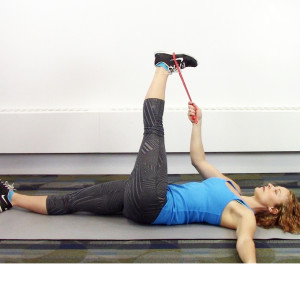
While I will answer that question, I also want to give you runners out there the latest information on the ITB, teach you how to manage yours so it doesn’t stop you from running and dispel any myths or wise tales that you may have heard about the ITB.
So….
The ITB is a long and thick “band” of tissue that runs from the outside of your hip to the outside of your knee. ITB syndrome is when this band of tissue becomes tight and/or inflamed.
When working properly, the ITB provides stability and allows efficient movement in our knees and also acts as a connection point for our hip muscles to our knee.
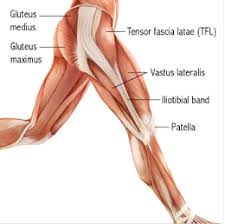
In runners, it usually presents as pain on the outside of the knee, but can also present as pain along the outer part of the thigh all the way up to the hip. It commonly comes on after a certain distance into your run, starting as a dull ache and progressing into a more sharp or burning pain the further you run. It typically also hurts more when going down hills, and you may sometimes also feel pain when sitting with your legs bent for a long time.
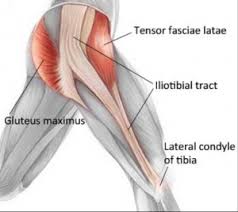
From an anatomical point of view, the irritation usually occurs over the outside of the knee as the tight IT band compresses itself against the bony outer part of your knee (lateral epicondyle of the femur if you want to get technical). This compression occurs due to repeated inward rotation of the leg and knee.
So what causes this repeated inward rotation? Well there are two main factors:
Like with any type of injury involving inflammation, the most important thing initially is to rest. I know that a lot of you avid runners aren’t going to like that, but unfortunately there’s no way an irritated band of tissue is going to heal itself if you keep irritating it (plus it gives you some time to work on underlying cause).

During the early stages of inflammation, icing the area and taking anti-inflammatories such as ibuprofen are good options to manage your symptoms.
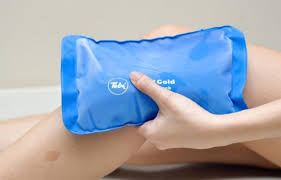
One thing to consider when thinking about preventing this from happening again is remembering that while your ITB may be the source of your pain, the actual cause is coming from another part of your body that is not working as well – your glutes.
The latest evidence shows that there is a strong link between weakness in the glute muscles and ITB pain. This is a great place to start your rehab and work on reducing the strain on your ITB. Here are 2 exercises that will help to strengthen the glute muscles: (check out my previous blog for some more great hip strengthening exercises for runners here)
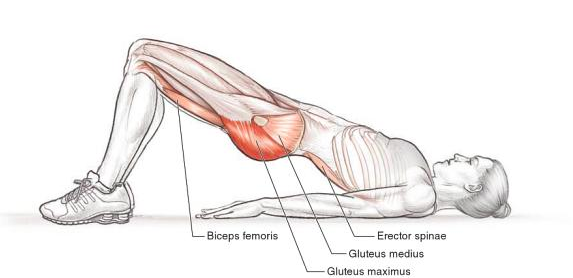
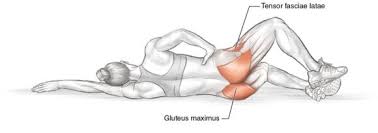
Your running technique may increase the strain through your ITB.
You may have fixed that weakness in your hip muscles but if you fall back into your old running style (through muscle memory), then more than likely your ITB pain will return.
The main thing to consider to unload your ITB is checking where your feet are landing or your ‘step width’.
What you want to avoid here is a ‘cross-over gait’, where your feet cross past midline (see image below on the left) which increases that inward rotation in the leg and knee which in turn tightens the ITB.
A great cue to think about to increase your step width is to imagine you’re running along imaginary line and that you want to keep each leg just on either side of the line as you run (images on the centre and right). Also slowly increasing your mileage as you return back to running can make sure you don’t overload your ITB too quickly.
So you’re probably wondering wondering if I’m going to answer that original question…
Well I have to confess it was a trick question!
A recent study found that it would require an incredibly ridiculous amount of force (over 900kg of it) to stretch your ITB just 1%, so it’s safe to say that you probably shouldn’t bother.
Before you we throw the baby out with the bathwater, there is still a place for stretching and foam rolling for ITB pain, especially local muscles like the Tensor Fascia Lata, quads and glute max that can get tight.
It is important to remember this will only provide symptom relief as it will not address the root cause of the problem, so it’s a worthwhile thing to try during the acute phase when the ITB is still very painful. Below are a couple of stretches/releases to try for those local muscles.
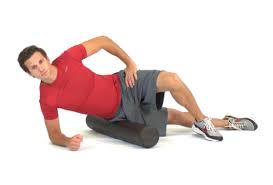
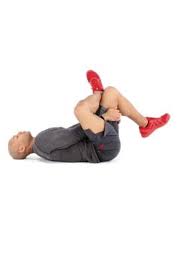
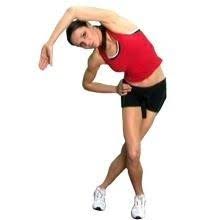
The next time someone tells you that you need to stretch your ITB, you can look at them smugly in the face and say “I couldn’t if I tried”. So guys, get those butt muscles toned and work on that running technique so you can put all your ITB dramas behind you. If need a hand, get in touch here.
#ITB #stretching #runners #running #strengthening #recovery

We breathe over 20,000 times a day, yet most of us don’t think twice about it. But if you struggle with chronic pain, fatigue, stress,

From Melinda… For people who come to my classes and clients who have been seeing me for a while, may have heard some of the

Meet Susan Susan recently suffered a fall attempting to lift a 2.5kg bag of soil overhead in her garden shed when she felt her leg
Sign Up Below To Get Your Free RedoHealth Guide Now

By registering, you agree to receive SMS and email communications from RedoHealth. No spam guaranteed. Unsubscribe at anytime.